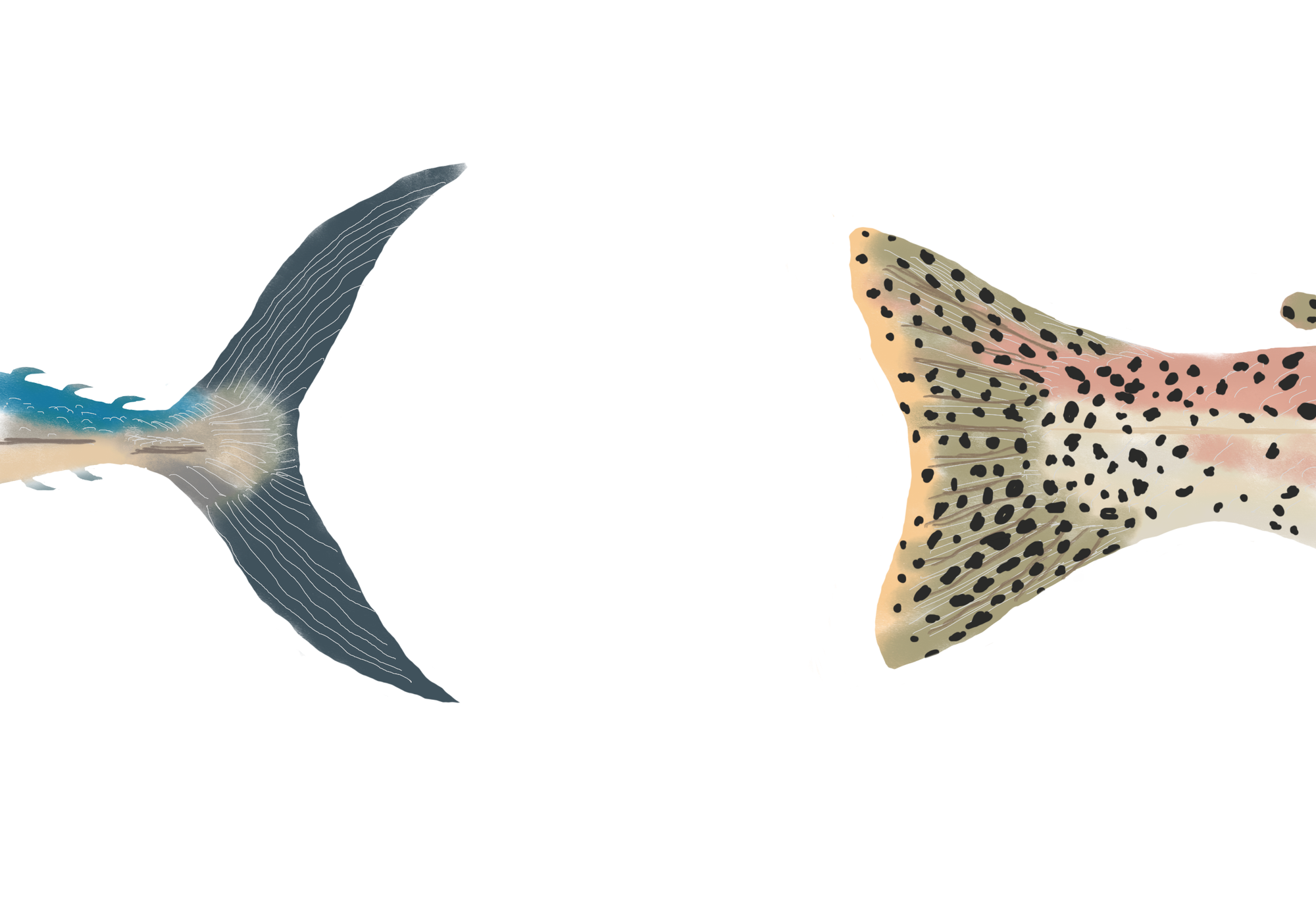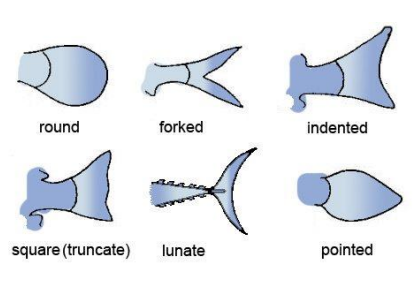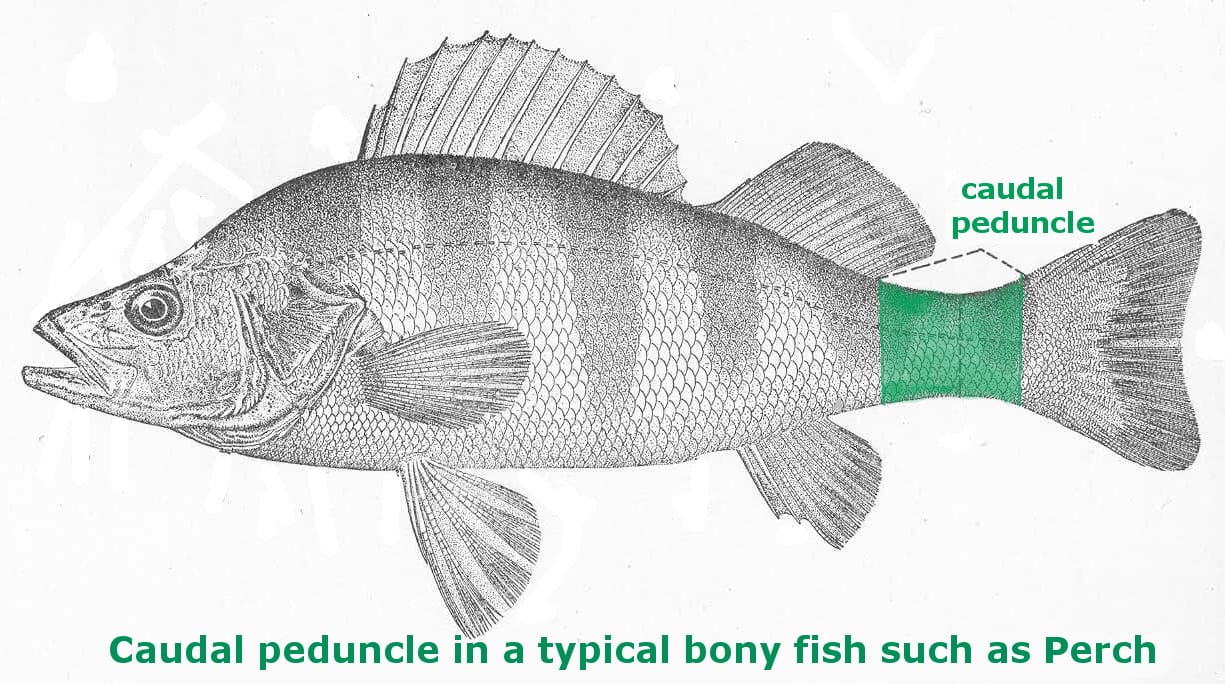Useful Biology: What A Fish Tail Teaches Anglers
We can learn clues about fish by simply understanding how tail shapes differ (Fly Fishing)

January 2024

For gamefish, tails are the main tool for finding food; and in the diverse world of fish, tails can drastically vary from species to species. But they look different for a reason, and we can quickly glean clues about fish by simply understanding how different tail shapes work. Plus, tail shape can tell anglers about the fight they can expect from certain fish. Pretty cool right? Let's dig in...
The Caudal Fin

The shape of a fish's tail (aka: the caudal fin) can immediately tell you about their foraging and cruising speed. Fish with deeply V or C shaped tails (think of a tuna) are constantly cruising, while fish with square or rounded tails (think of a trout) are more adept at maneuverability at the cost of speed. Why? Deeply forked tails produce less drag, creating a streamlined system for sustained and bursts of speed. Meanwhile, square or rounded tails developed for stability, maneuverability, and even ambush. There might be some other clues too, maybe the prey of a forked or lunate tailed fish are equally quick, or maybe a forked tail developed on a fish to assist in long migrations, or to avoid predation (think of bonefish). Meanwhile, a trout's square tail is better adapted for life in a turbulent river, where drag can be good as it helps them maneuver and do things like sip emerging insects off of the surface film.
The Caudal Peduncle

Sometimes fish will have forked features in their tails and still not be considered super fast swimmers, and that's because the intersection between the body and the tail (the caudal peduncle) also factors into producing drag and impacting swim speeds. Often times in predators, this relates to an ambush style hunting, like in pike, or barracuda. But as a general rule, the wider the caudal peduncle, the slower a fish's overall swim speed, or lesser stamina for sustained speed.
What Does This Mean For Anglers?
For anglers, tails clue you into how and where a fish feeds and, most importantly, how well they are going to fight when hooked. Of course, this is all relative to the fish’s overall size. Example, Jack Crevalle aren't well regarded as a prized saltwater gamefish, but based on their shape, people are starting to realize their value.
- For streamer anglers, these clues may help inform how to work your fly: quick vs. slow
- Forked tails tend to indicate fish preferring open water conditions
Maybe you're chasing something new, by inspecting some photos of fish you can get clues for finding the next big thing in fly fishing.
Sources:
- Science Rush. Accessed 2023. External Anatomy & Physiology of Fishes. http://www.sciencerush.net/files/MarineDownloads1st/Nekton/Lab-External_Anatomy.pdf
- Wikipedia. Accessed 2023. Caudal Peduncle. https://en.wiktionary.org/wiki/caudal_peduncle
- Sussex Wildlife Trust. 2021. Fish tail tales. https://sussexwildlifetrust.org.uk/news/fish-tail-tales
- Fishionary. 2014. Caudal peduncle. https://fishionary.fisheries.org/caudal-peduncle/


